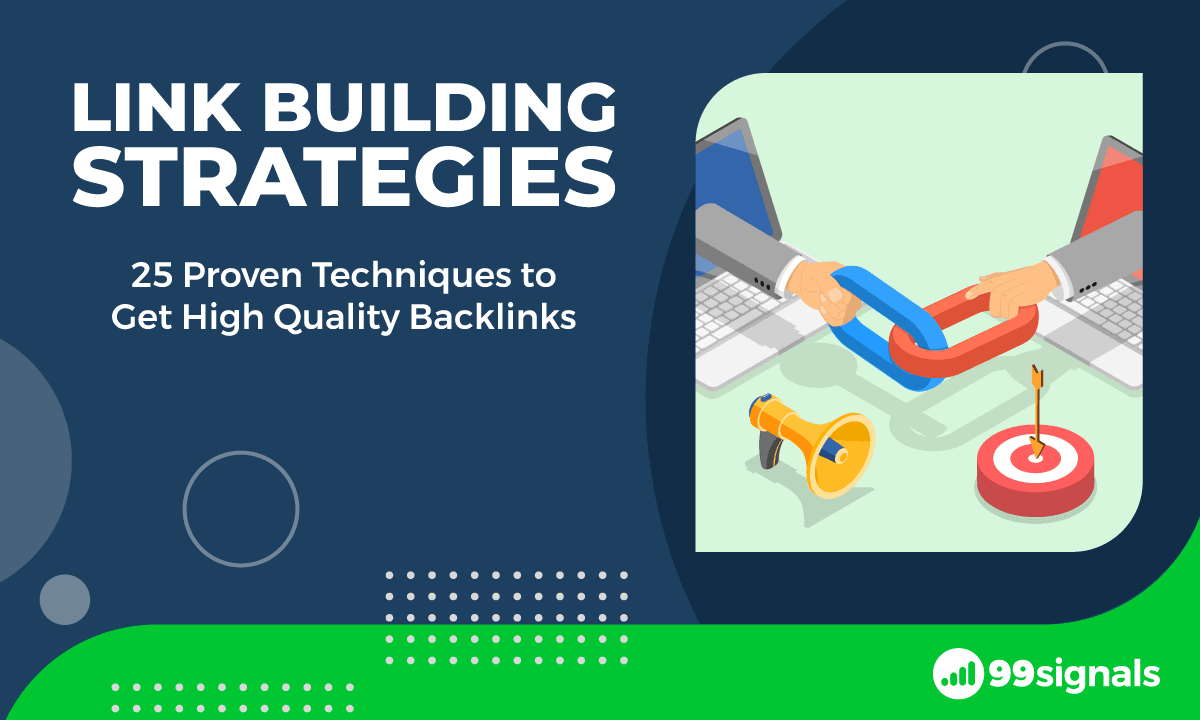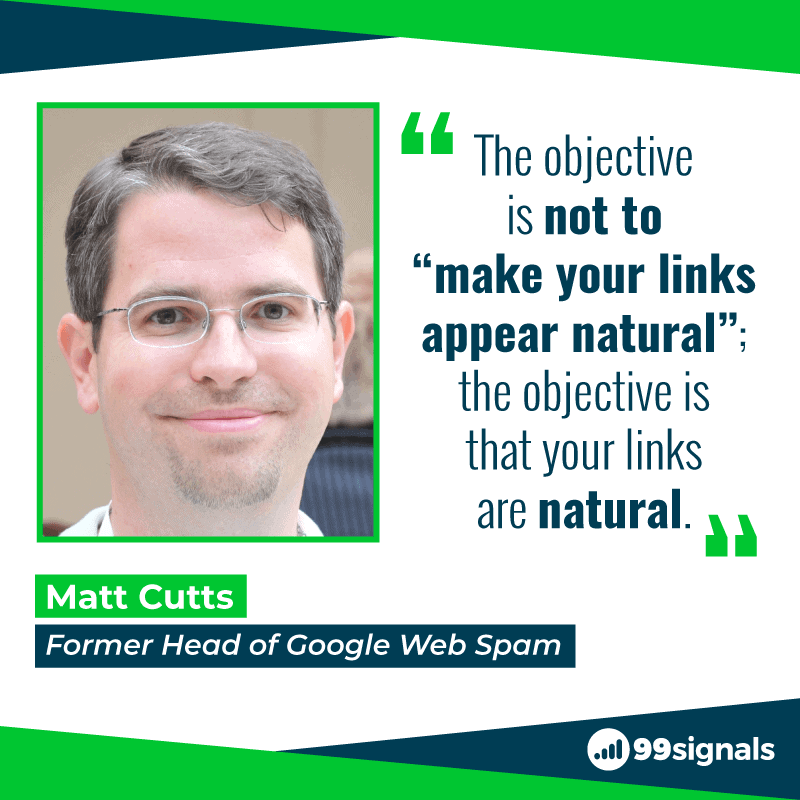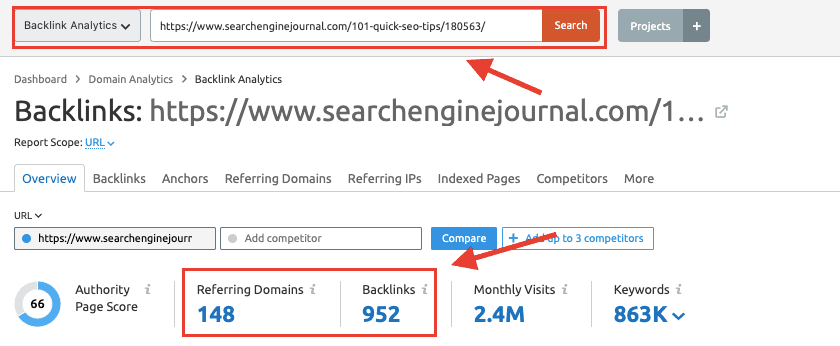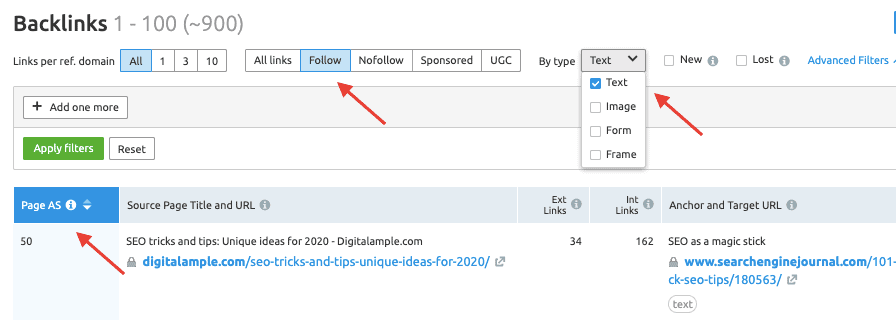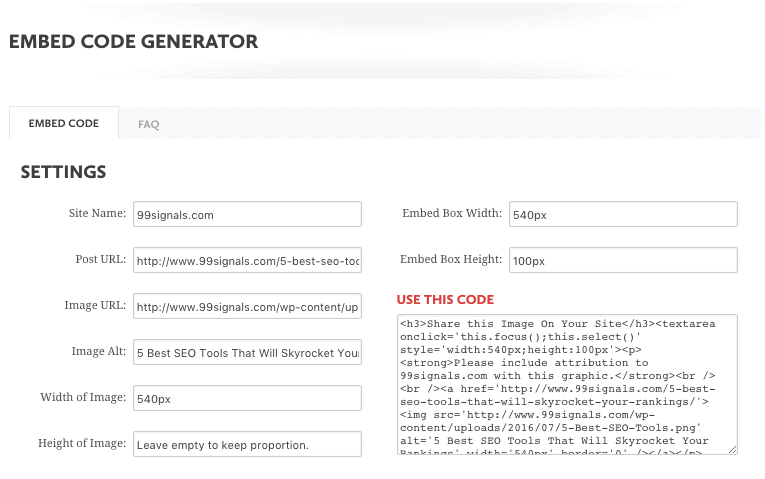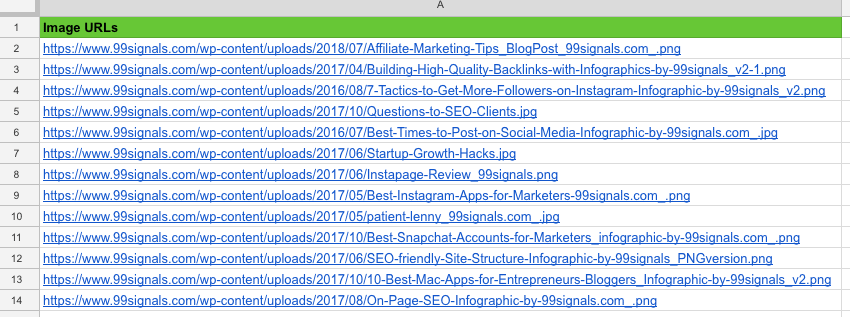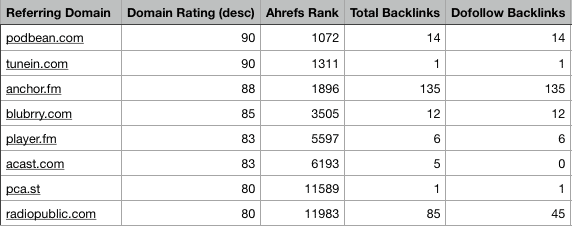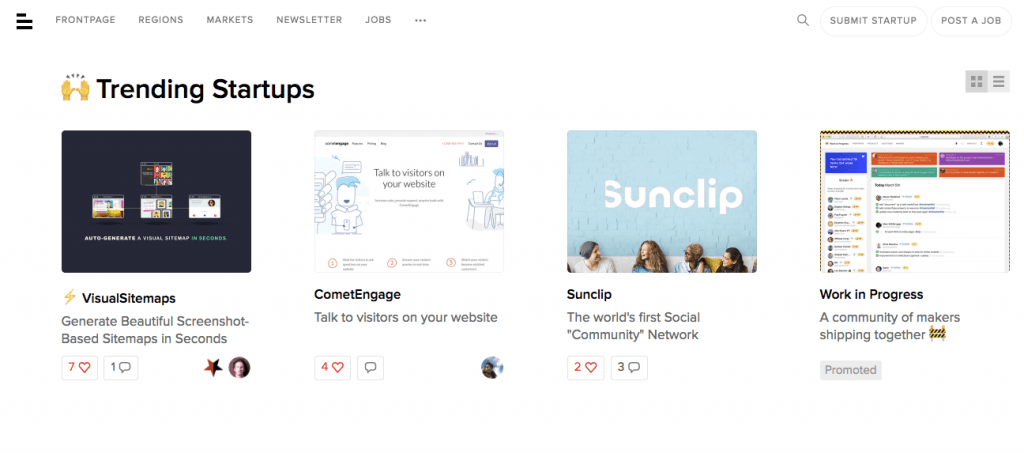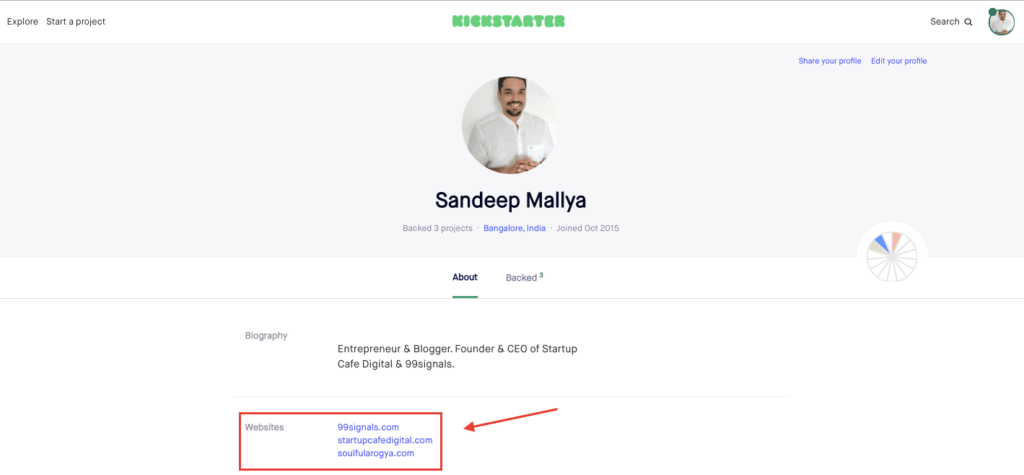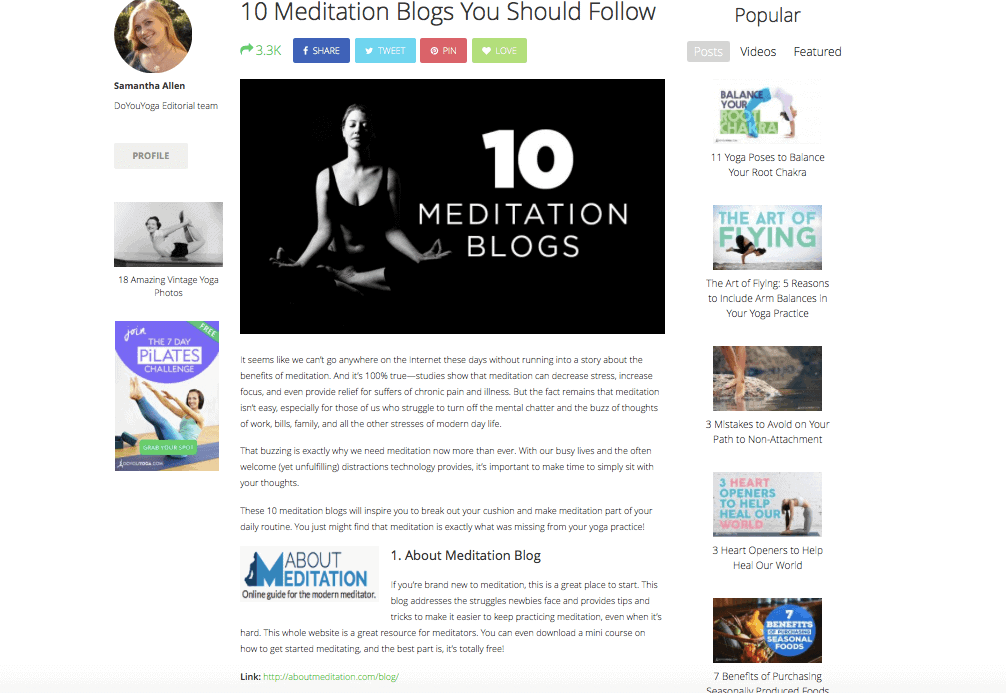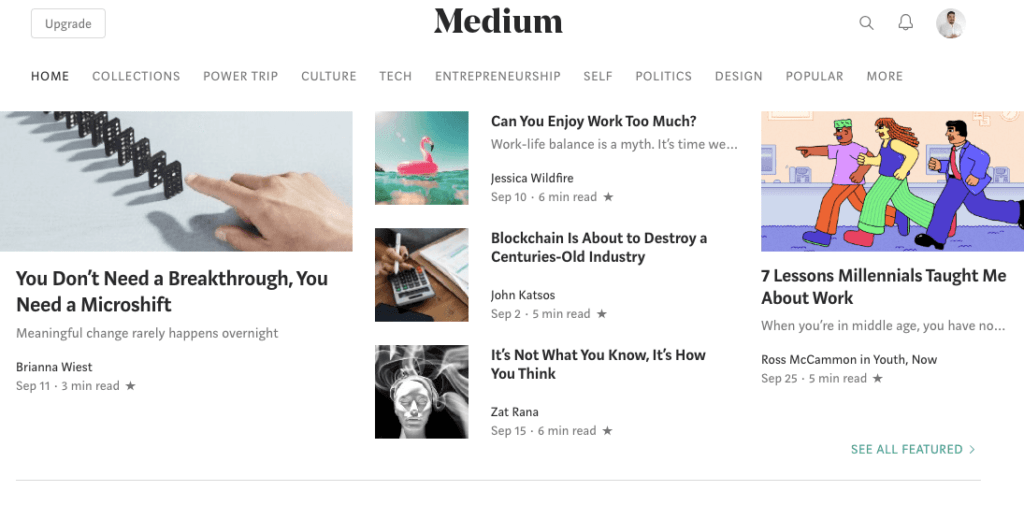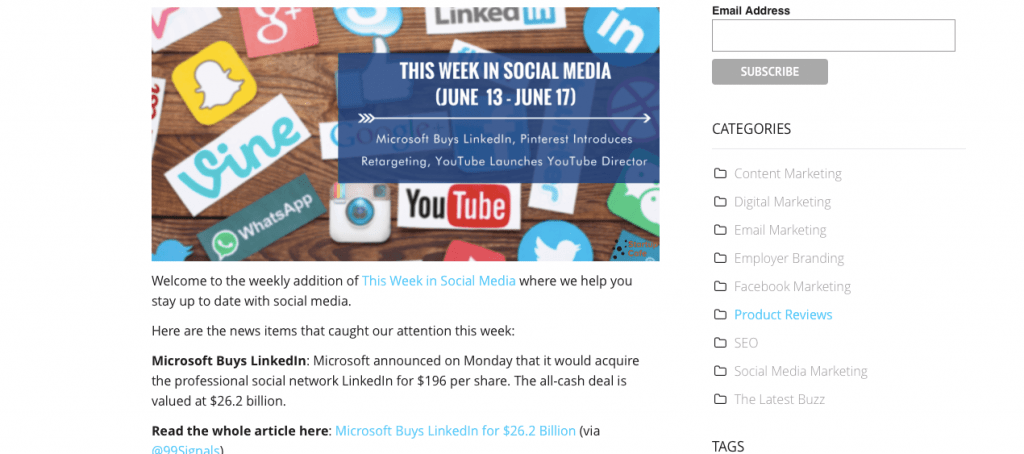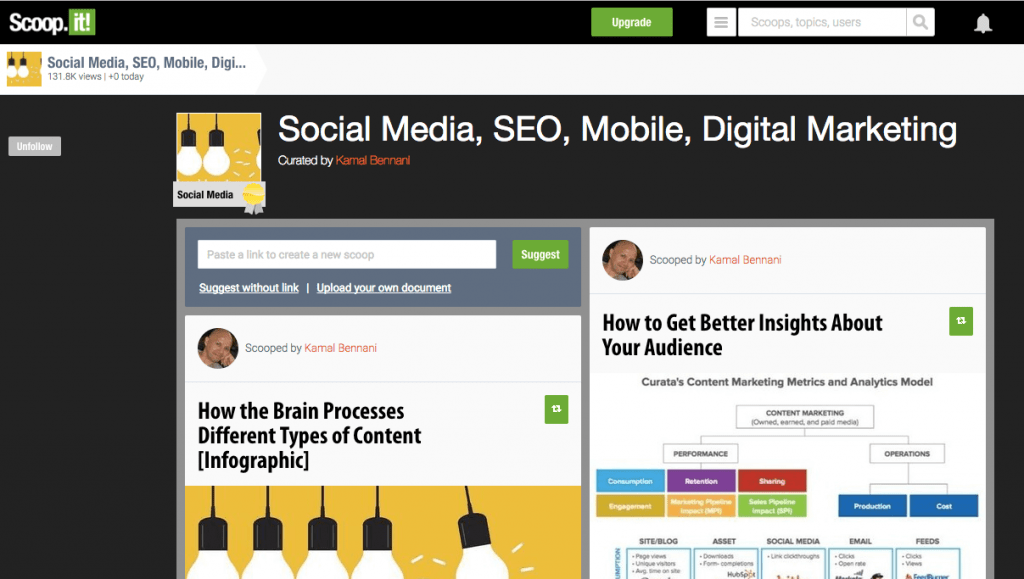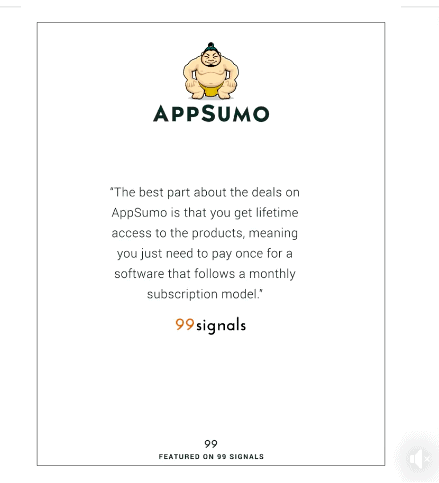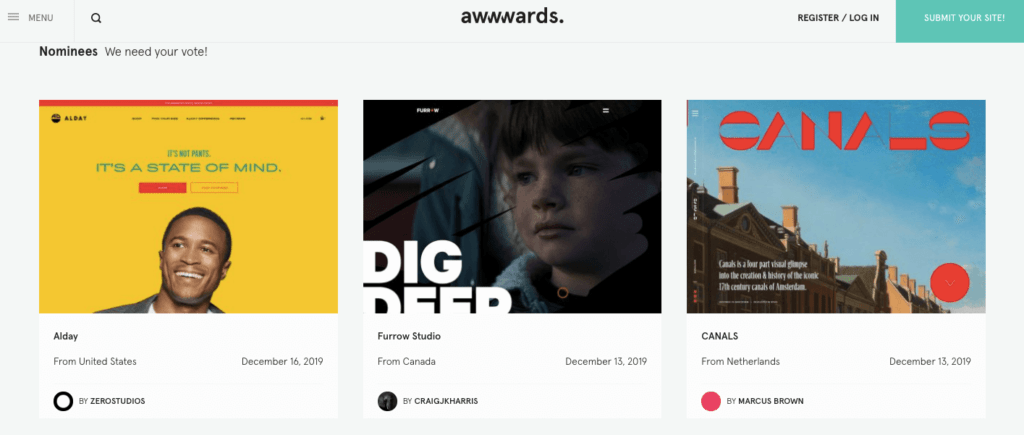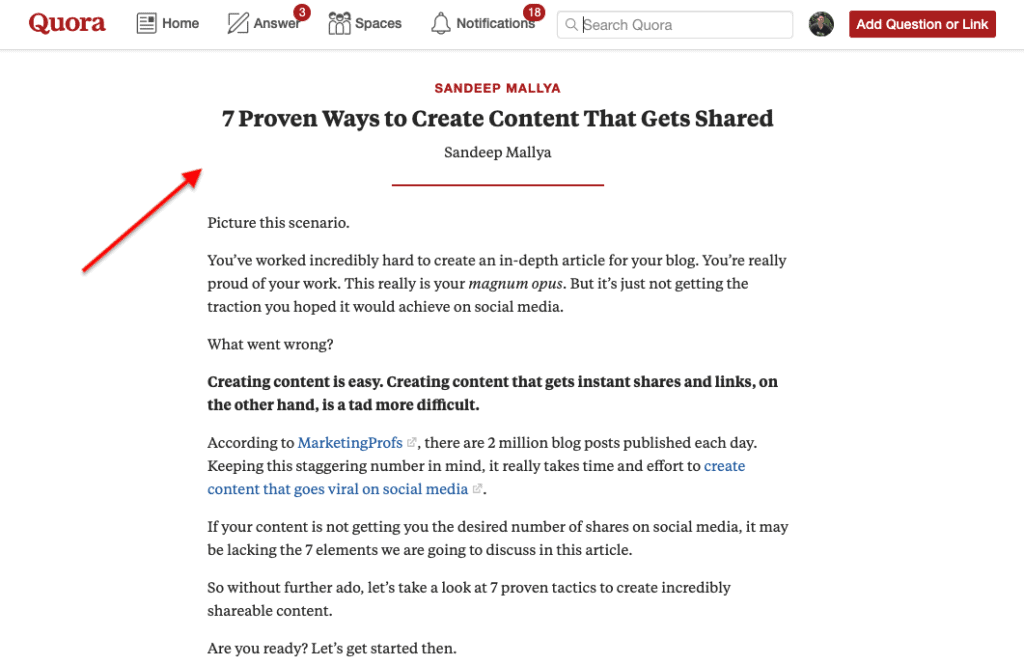Yet our link building efforts mostly extend to commenting on blogs in the same niche (“nofollow” backlinks with no link juice) or contributing guest posts to simply brag about where we’ve got our content published (under strict scrutiny by Google). But if you’d like to increase your site’s authority and rank higher than your competitors in search engine result pages (SERPs), you need to build authority backlinks on a consistent basis. In other words, you need to follow effective link building strategies that deliver results. In this article, we’ll reveal 25 proven techniques to get high-quality backlinks that will help you stay ahead of the competition and rank higher in SERPs. No time to read this guide right now? No worries! Just click the link below to receive a free PDF copy of this guide, so you can read it at a more convenient time. Download our Link Building Guide for free Here’s what this link building guide will cover. Feel free to jump to any section of your preference:
25 Proven Tips to Get High-Quality Backlinks
1. Publish Evergreen Content
Natural links (also called editorial links) are the kind of links Google wants you to build.
25 Proven Tips to Get High-Quality Backlinks1. Publish Evergreen Content2. Steal Your Competitors’ Backlinks3. Build Backlinks with Infographics4. Use Reverse Image Search to Build Backlinks5. Create Interactive Content6. Start Your Own Podcast7. Get Active on Product Hunt8. Submit Your Site to Startup Directories9. Build Profile Links10. Find Backlinks from “Best of” Blog Posts11. Submit Your Site to Blog Aggregators12. Syndicate Your Content on Medium and LinkedIn13. Link Roundups14. Create a Crunchbase Account15. Use Brian Dean’s Moving Man Method16. Create and Optimize Your About.me Page17. Build Authoritative Links with HARO (Help A Reporter Out)18. Scoop.it Backlinks19. Provide Testimonials20. Link Reclamation21. Broken Link Building22. Submit Your Site to CSS Galleries23. Republish Your Content on Steemit24. Email Outreach to People Featured on Your Blog25. Repurpose Your Articles on Quora SpacesConclusion
This quote from Matt Cutts, former head of Google Web Spam, is from 2009 and it’s still as relevant as it was back then:
Want to know the best way to build links naturally? Publish evergreen content. Evergreen content is content that stays relevant in the long run. Unlike news articles and posts on trending topics (posts on Fortnite, Pokemon Go, etc.), evergreen posts provide value to the readers a long time after the post was originally published. Evergreen posts don’t just tend to rank higher on Google, but they also attract a high number of backlinks. In order words, evergreen content is link-worthy content. It’s the type of content that attracts editorial links. Evergreen posts are also tough to outrank in SERPs. Ahrefs published an in-depth post on “evergreen content” in which they explain how difficult it is to outrank Moz’s Beginner’s Guide to SEO for beginner SEO queries because of the insane amount of backlinks the guide has acquired over a period of time.
So how do you create evergreen content? Follow these three steps:
Find keywords with a decent search volume – Use Semrush’s Keyword Magic tool (or any other keyword research tool of your choice) to find keywords with a decent search volume. Make sure the shortlisted keywords are not seasonal and have maintained a good search volume consistently in the last few months. Create 10x content – Once you’ve identified the keywords you’d like to target in your post, you need to make sure your content is actually 10 times better than the highest ranking search result for the keywords. This type of content is referred to as 10x content in the SEO community. If your post is only slightly better (1x or 2x better) than the top-ranking post, the chances of it getting outranked are quite high. But when you publish content that is 10x better, like in the case of Moz’s Beginner’s Guide to SEO, it’s tough for your competition to beat you in the SERPs. Refresh and relaunch – Just because the post is evergreen and ranking in the top 3 search results, there’s no guarantee it will maintain that status in the long run. Over time, the organic traffic may drop and it may lose its ability to generate links naturally. This is when you need to audit your content and update it with fresh insights to stay relevant. I keep updating and relaunching top-ranking posts on my blog whenever I notice a declining trend in organic traffic. And you should do the same to your evergreen posts in order to maintain their top-ranking status in SERPs.
Bottom line? In order to attract high-quality natural links, publish evergreen blog posts that stay relevant long after you’ve published them. Recommended reading: Content Upgrade Strategy: How to Optimize Old Blog Posts to Get More Traffic
2. Steal Your Competitors’ Backlinks
In some cases, your evergreen content may not be able to generate authoritative links naturally, or even if it does, it may take a long time to do so. Without backlinks, you may be able to rank on page 1 for your target keywords, but you’ll find it tough to reach the coveted top 3 spots on Google. As a result, in order to beat your competitors in SERPs, you need to steal their best backlinks. You can do this with a combination of competitor analysis and blogger outreach. Here’s a quick outline of how you should proceed: First, check out the top 3 search results for your target keyword terms. You can do this by performing a quick Google search, but since Google rankings fluctuate often, I’d suggest you use an SEO tool like Semrush or Ahrefs to see if these pages have been ranking on top consistently, at least for the last 4-6 months. Second, you need to publish content that’s just as in-depth and comprehensive, if not more, than that of your organic competitors. As explained previously, create content that is 10 times better than the top-ranking post for your target keyword terms. Add your own unique insights and perspective to make it as link-worthy as possible. Aim at making the post a go-to resource for your audience for that specific topic. Third, identify your competitors’ backlinks i.e., the backlinks that point to the top-3 ranking pages for your target keywords. You can get this data with Semrush’s Backlink Analytics tool. Sign up for a 1-month free trial of Semrush Pro here to get full access to this tool. Login to your Semrush dashboard, navigate to Backlink Analytics and enter the URL of one of your competitors:
You’ll view the total number of referring domains and backlinks that point to your competitor URL. Click on the number of backlinks to view the URLs that are linking to your competitor’s page. You can narrow this list down by selecting only “dofollow” and “text” links, and then sorting the domains based on Authority Score (Semrush’s version of domain authority score):
Prepare a spreadsheet of all the URLs that can be potential backlinks for your post. Ignore the URLs where the Authority Score is too low. Repeat the same process for the remaining two competitor URLs. Once your spreadsheet of link prospects is ready, the final step is to perform an email outreach campaign by sending personalized emails to each publication/blogger who has linked to your competitors. You can find their email addresses by using a tool like FindThatLead or NinjaOutreach. In your email, make sure you highlight the things that make your content unique and provide reasons as to why you believe your post deserves a link back. For this specific task, you can use any of these blogger outreach tools. Not all sites you’ve reached out to will respond positively to your email. But don’t be disheartened. As long as your content is link-worthy and you’ve provided compelling reasons in your email to link back to your content, you should soon be rewarded for your efforts with some high-quality backlinks. This is an advanced link building tactic. To learn more about email outreach, check out this in-depth email outreach guide by Digital Olympus. Need help with competitive analysis? Try any of these 7 best competitor research tools to analyze your competition.
3. Build Backlinks with Infographics
Infographics are not just popular on social media sites such as Pinterest and Reddit. They can also improve your SEO significantly and increase web traffic. Case in point: Websites that publish infographics see their traffic grow an average of 12% more than sites that don’t. Yet most people ignore infographics because they wrongly assume that it requires a lot of time and effort to design one or consider it to be an expensive task to outsource. Here’s the truth: Infographics are remarkably effective in generating high-quality backlinks for free. You don’t need to be a professional designer either. With free online design tools like Canva, Venngage, and Piktochart, you can create fancy infographics in a matter of minutes. Another way to create beautiful infographics is to outsource it by hiring professional designers on sites such as Fiverr, Upwork, or if you have a bigger budget, Design Pickle. Once your infographic is up and ready, it’s time to promote it. Follow these steps:
- Submit your infographic to infographic submission sites Here’s a list of sites that allow you to submit your infographics (both free and paid). I’ve also mentioned the domain authority of each of these sites to signify the value of each backlink that you’ll get, so you can prioritize your efforts accordingly:
Graphs.net (DA – 54) Visual.ly (DA – 78) InfographicBee (DA – 27) Cool Infographics (DA – 60) Infographic Journal (DA – 55) Submit Infographics (DA – 46)
For more infographic submission sites, check out 40 Infographic Submission Sites to Promote Your Infographic (and Get Backlinks). 2. Reach out to bloggers in your niche and offer them the infographic for free as a guest post The next step is to identify bloggers and influencers in your niche. You can do this by using a tool like BuzzSumo or any of the blogger outreach tools featured here. Once you’ve identified the bloggers, send them an email informing them about your new infographic and how it can add value to the content they have created on the same topic. If need be, offer to write a unique summary for the infographic. Everyone loves well-designed, informative infographics and half of the sites you reach out to will gladly accept to include your infographic in one of their articles. 3. Use Siege Media’s Embed Code Generator to generate an embed code for your infographic Siege Media’s Embed Code Generator allows you to generate embed codes for your infographic. Once the code is generated, all you need to do is copy and paste the code below your infographic.
By generating an embed code for your infographic, you make it easier for others to share and embed your infographic onto their own site. Here’s the best part: every time someone includes your infographic in their content, you get an attribution. Yet another easy way to fetch a contextual backlink. Bonus Resource: For a more detailed description of link building with infographics, check out this article or download this free eBook.
4. Use Reverse Image Search to Build Backlinks
If you have a decent amount of visual content on your blog (infographics, screenshots, charts, etc.), there is a high possibility that someone on the Internet is using your images without giving proper link attribution. Luckily, there is an easy way to resolve this issue and get a backlink in return. Just follow these steps: Step 1: Open a new Google Sheet and list down the URLs of all the important visual assets on your site.
Step 2: Use Google Image Search to find websites that are using your images without attribution. Enter the Image URL in the Google search box and then click on ‘Search by Image’ to find all the websites which are using your image in the “Pages that include matching images” section of the search.
Find out which of these sites are not giving you credit for the image. Step 3: Send an email to the site owner requesting a link attribution for using your image on their site. You can use the email template below: Hi [Name], I’m [Your Name] from [Your Blog]. I noticed that you’ve used one of my images in your post: [insert link to the article]. However, you haven’t included a link back to my website. I’d really appreciate if you could add a link to my website below the image. Here’s the link where the image is taken from: [insert your post URL] Thanks, [Your Name] In most cases, you’ll get a quick positive response from the site owners. And just like that, you’ve earned yourself a contextual backlink.
5. Create Interactive Content
Interactive content such as quizzes, polls, and calculators generate a lot of buzz on the Internet these days. No other publication exemplifies this trend more than Buzzfeed. On average, the team at Buzzfeed creates 7.8 quizzes a day and 96% of users who start Buzzfeed quizzes finish them.
Quizzes are not just popular with users, but they also tend to generate a ton of authority backlinks. For example, Buzzfeed’s most popular quiz “What City Should You Actually Live In?” till date has generated over 1,500 backlinks, including links from publications such as Washington Post, TechCrunch, Forbes, Fast Company, and many more.
There are several tools on the web that can help you create your own quizzes and calculators. I’d recommend Outgrow since I’ve used them to create interactive content on my blog, but you can also try Uberflip and ion interactive. Here are 3 pieces of interactive content I created using Outgrow:
[Quiz] Are You An SEO Pro? Answer these 20 Questions to Find Out Facebook Ads Quiz: 15 Questions to Test Your Facebook Marketing Expertise How Often Should You Blog? Use Our Blogging Frequency Calculator to Find Out
Recommended reading: 20 Examples of Truly Engaging Interactive Content
6. Start Your Own Podcast
You can build your link profile by being invited as a special guest on any of the popular podcasts in your niche. That definitely works. But an even better link building strategy is to launch your very own podcast. Think about it! By having your own podcast, you’ll have more creative control on your content, you don’t need to waste time sending outreach emails to podcasters in your niche and waiting for their response, and more important, podcasting is fun and provides you with an opportunity to build your own personal brand and showcase your expertise. With free apps like Anchor, it’s now easier than ever to launch your own podcast. In fact, you can start recording an episode using just your smartphone. That said, I do recommend you invest in a good microphone if you’re serious about podcasting.
I started my own podcast, Marketing Mantra, back in August 2018 and here are some of the authority backlinks I’ve been able to build thus far:
Invariably, once your podcast gets popular, other influencers in your niche will reach out to you to be a part of your podcast. Not to mention the invites you’ll receive from other podcasters to feature in their podcasts. Recommended reading: 37 Best Marketing Podcasts You Should Listen To
7. Get Active on Product Hunt
Image Courtesy: Product Hunt Product Hunt is a place to discover the latest technology creations, websites, mobile apps, and tools that everyone is geeking about. I love spending time on Product Hunt not just to discover cool new products, but also because it’s a great place to have thoughtful discussions with product-loving enthusiasts. To get a backlink from Product Hunt, you need to create an account on Product Hunt, link to your website, and then be active on the site. You can do this by writing reviews for products you’ve used, leaving your comments on newly launched products, and of course, by upvoting and downvoting products on a regular basis. Product Hunt has a domain authority of 86 (and it keeps increasing), so it’s worth having an active account. Click here to create your Product Hunt account
8. Submit Your Site to Startup Directories
If you’ve just launched your startup, there are tons of startup directories you could submit your site to. Perhaps the most popular startup directory is BetaList, a directory which is focused specifically on early-stage internet startups. The submission is free, but if you’d like to expedite the process and ensure that your startup is listed, then you’ll need to pay a small fee. You can check out their submission criteria here to see how they review the startups. Even if your startup is not eligible for submission at BetaList, there are lots of other startup directories with high DA which will accept your submission. Here’s a list of 100 startup directories compiled by Ninja Outreach.
9. Build Profile Links
Profile link building is a process where users sign up on sites where they can create a public profile and provide a link to their website. Several websites which thrive on having an active community allow you to create a public profile where you can feature links to your website and social channels. A few examples are websites such as Kickstarter, Moz, Semrush, and Triberr.
To get more tips and insights into this link building strategy, refer to this in-depth guide by Monitor Backlinks.
10. Find Backlinks from “Best of” Blog Posts
This particular method of getting backlinks is borrowed from Brian Dean at Backlinko and it’s insanely effective. Here’s what you need to do: Step 1: Use these following search strings on Google
“Best (TOPIC) Blog Year” “(TOPIC) blogs to read” “My Favorite (TOPIC) blogs”
Any of these above searches will show you a list of “best of” blogs in your selected topic.
Step 2: Create a new Google Doc and add links to any quality blog that you’d like to get a backlink from. Also note down the email addresses of the bloggers you’d be reaching out to. In most cases, you can find them in the contact section. If not, use Ninja Outreach Chrome Extension to find their contact details. Step 3: Reach out to these blogs via email and present them with a link to your article and ask them if they can include it in one of their weekly/monthly roundup posts. You can use the below email template to reach out to the bloggers: Hi [Name], I’m a digital marketer and regular reader of your blog posts. I also run the blog at [Your Blog] and today, we published a pretty massive guide on [Subject of Your Blog Post]. I think it might be a good fit for your roundup posts and thought I’d reach out. Here’s the link to the guide: [Your Post URL] No worries if it’s not a good fit – I’ll be a regular reader regardless! Thanks, [Your Name] Many of these blogs will also allow you to post a comment along with a link to your website. One of the easiest and quickest ways to get a backlink is to post thoughtful comments on any of the articles on these blogs that you deem worthy to get a link from. Make sure your comment is THOUGHTFUL. Instead of posting “Great article,” think of creative ways to appreciate the kind of information the author has provided in the article. You may even ask a question. But you may be thinking that there are blogs which simply don’t allow you to provide a link to your website. They may be using the Facebook comment system or Disqus to manage and moderate their comments. In such cases, the best way to get backlinks would be to use the email outreach method. Though it involves some work, the backlink you’ll eventually generate for your site would be worth the time and effort.
11. Submit Your Site to Blog Aggregators
Blog Aggregators are sites which list blogs from different industries. Examples include AllTop, Blogarama, and BlogEngage.
Though they don’t have the same amount of link juice they once had, you can still get a decent amount of referral traffic from these blogs. You can get high-quality dofollow backlinks from most blog aggregators for free in three easy steps:
Submit your site (in most cases, the RSS feed of your blog) Add a special HTML code to your site to confirm your ownership of the site Wait for the blog aggregator to review your site
When it’s approved, you will get your own page on the blog aggregator listing all your articles. Here’s a complete list of blog directories/aggregators you can submit your site to.
12. Syndicate Your Content on Medium and LinkedIn
Yes, the links on Medium and LinkedIn are “nofollow”, but that doesn’t mean they are completely useless. Nofollow links can drive awareness, traffic, and can even lead to dofollow backlinks eventually. If you have a new website, the awareness and traffic boost can be really important. This article by Nicole Kohler on Moz makes a fantastic case for using and attaching importance to nofollow backlinks. In her article titled “The Hidden Power of Nofollow Links”, Nicole explains the importance of nofollow backlinks as follows: “At its very core, a link is designed to create awareness of something on a different page. Nofollow links still build awareness, as long as they are seen. They don’t have to be followed. They probably don’t even have to be clicked! They just have to be visible.” With this in mind, start syndicating your content on Medium and LinkedIn (via LinkedIn Publishing) and expand the reach of your content to a whole new audience. If you can create native content on these platforms, that’s even more wonderful. But the very least you could do is replicate some of your top posts on to these two platforms and gain a wider reach and awareness for your content.
13. Link Roundups
There are lots of high quality blogs that do link roundups. Link roundups are weekly or monthly blog posts that link out to great content in their respective niche. At my agency blog, we used to publish a weekly roundup of social media news and call the segment ‘This Week in Social Media’. These articles used to include headlines of all the top social media news stories in a given week with a link to the source below each headline to corroborate the news story.
You will find blogs that do similar roundups in your niche as well. Here’s how it works:
- Your first task is to find link roundups in your niche. Use the following search strings:
“your keyword” + “link roundup” “your keyword” + roundup “best of” + “your keyword” “your keyword” + “this week”
- Once you find a blog that you’d like to target for backlinks, pitch your content to the person who runs the blog. You can use the below script: Hey [Name], I’m [Your Name] from [Your Blog URL]. I know you like to make compilation articles about everything [TOPIC] – so I just wanted to send a few of my recent ones your way. I’d really appreciate it if you could include these articles in your monthly roundup. [Link to Article 1] [Link to Article 2] Thanks, [Your Name] Just sit back and wait for the person to respond. If your content is the right fit for the blog’s roundup, then you’ll get a quality backlink for your site.
14. Create a Crunchbase Account
Crunchbase is a community of millions of users who like to stay on top of the latest industry trends, investments, and news about global companies – from startups to the Fortune 1000 companies. While Crunchbase is a great place to connect with users with whom you share similar interests, it’s also a great resource to fetch a high-quality backlink for your website. Just by creating a Crunchbase account and linking to your website, you’ll get a backlink from a website with a domain authority score of 91. If you’re a small business owner or entrepreneur, create a profile for your company as well. It’s a simple way to generate a backlink from a high DA site and all it takes is two minutes of your time. Click here to create your Crunchbase profile
15. Use Brian Dean’s Moving Man Method
This is yet another technique which I learned from one of Brian Dean’s articles and I’ve found it extremely useful. Here’s how the Moving Man Method works: Step 1: Find sites in your niche which have either shut down or changed their names and URLs. Step 2: Find sites linking to the old URL. Step 3: Reach out to these sites and let them know about their outdated link. To explain this technique in a better way, let’s take the example of Moz, a popular SEO tool run by SEO Guru, Rand Fishkin. A while back though, Moz was operating as an SEO agency named SEOMoz. As a result, they had to change the URL from seomoz.org to Moz.com. Sure, if you visit seomoz.org, it redirects to moz.com. So the links used by sites linking to seomoz.org aren’t broken, but they are outdated. This is because the link points to the old URL and the anchor text has the old brand name. As you may realize, this is a huge opportunity for people running SEO/Marketing blogs to reach out to sites that are still using the seomoz.org link in their content. And there are plenty of sites doing just that. In order to make this technique work for you, you need to keep an eye out for sites that are either rebranding or changing names. Use PRWeb to see whether there are any brands in your niche that have recently rebranded. Use this search string – “your keyword” + rebrands”. Do a similar check on Google News as well. Once you’ve found a site which has rebranded or changed its URL, it’s time to reach out to sites which are still using the old URL in their content. Just copy the URL and paste into your backlink checking tool of choice (I recommend Semrush). You’ll find dozens of sites which are still linking to the old resource. The last step in the Moving Man Method is to reach out to these sites and give them a heads up about the outdated link they are using in their content. And then give a subtle suggestion to add your link to their site. To learn more about the Moving Man Method, click here.
16. Create and Optimize Your About.me Page
About.me allows you to create your free, one-page website in just a few minutes. An easy way to fetch a dofollow backlink for your site is to create an About.me profile, enter a link to your blog in the ‘Spotlight Button’ section, and also include additional links in your bio. Something like this:
With an About.me profile, you can get an authoritative backlink (About.me’s DA is 92) in under five minutes. Click here to create your About.me profile
17. Build Authoritative Links with HARO (Help A Reporter Out)
Help a Reporter Out (HARO) is a sourcing service which connects journalists and bloggers with relevant expert sources to meet journalists’ demanding deadlines and enables brands to tell their stories. Subscribing to HARO provides you with an opportunity to fetch high quality backlinks from authority news sites. Here’s how it works: With HARO, you can build backlinks from authority news sites such as WSJ, Mashable, Inc, FastCompany, Reuters, etc. Recommended reading: How to Build Backlinks Using HARO [Case Study by Ahrefs]
18. Scoop.it Backlinks
Scoop.it is a site where people aggregate their favorite content around the web into a magazine format. It’s also an excellent place to get high-quality “nofollow” backlinks and boost your referral traffic. So how do you go about fetching backlinks on Scoop.it? It’s quite simple really. An active Scoop.it user usually has curated magazines which have hundreds of followers. This means that your content can get in front of hundreds of people. Follow these two simple steps to get people to share your content on their Scoop.it magazine: Step 1: Give a search on the topic of your content. Ex: Social Media Marketing. Find users who have magazines with lots of followers and views. Step 2: Pitch your content to these people by using Scoop.it’s ‘suggest’ feature. You can share the same content with 5 people in a day and chances are that about 50% of them will share it with their network.
19. Provide Testimonials
Consider giving a testimonial for a product that you really love using. All companies love showing off customer testimonials on their home page or have a dedicated page for them. Once you’ve written the testimonial, make sure you let them know that they can include your testimonials on their home page or testimonials page. Here’s my testimonial for Serpstat published on their testimonials page:
Here’s another example of a testimonial I wrote for AppSumo: AppSumo has used the above testimonial on several of their promos.
20. Link Reclamation
Link reclamation is simple and works like magic. Here’s how it works:
First, you find mentions of your brand that don’t link back to your site Then you send an email to the person with a friendly reminder to add the link
Here’s an email I received from Canva a few weeks ago which serves as a fine example of link reclamation tactic:
It’s that simple and it works in most cases (like it did here in the example above 🙂 ). Here’s how you can go about reclaiming your link:
- Find unlinked mentions using Buzzsumo A tool like Buzzsumo can help you find unlinked mentions of your brand. Setup a content alert for your brand or domain on Buzzsumo, so that whenever someone mentions your brand, you get an email alert.
- Check whether the site has linked back to your site If they have linked back to your site, awesome! If not, then move on to step 3.
- Reach out and get your link Send them an email with a friendly reminder. You can use the script below (same that was used by Canva): Hey NAME, I just wanted to reach out and say “thanks” for mentioning (your brand) in your article: [link to the article] We really, really appreciate it. I’m reaching out today to ask if you could add a link back to our site. That way, people can easily find us while reading your article. Either way, thanks for the shout out and keep up the great work! Thanks, (Your Name) Link reclamation is an easy, yet effective way to get quality backlinks for your site.
21. Broken Link Building
A broken link is one that points to a page on a site that has since been moved or deleted. In other words, these are pages that return a 404 error. Broken link building involves some bit of work, but it’s a safe way to generate fresh, high quality backlinks for your site. Here’s what you need to do: Voila! You’ve earned yourself a high quality backlink.
22. Submit Your Site to CSS Galleries
Proud of your site’s design? Then you can showcase them on CSS galleries and gain easy backlinks in return.
Here’s a list of CSS galleries where you can feature your website for free or for a nominal fee:
Awwwards CSS Design Awards CSS Mania Design Inspiration CSSFox CSSWinner
23. Republish Your Content on Steemit
Steemit is a blockchain-based blogging and social media website which rewards its users with the cryptocurrency STEEM for publishing and curating content.
The website currently has over a million registered users. You can republish some of your articles here, reach a wider audience for your content, and even gain backlinks in return. Click here to create your Steemit account
24. Email Outreach to People Featured on Your Blog
This strategy may not get you a backlink each time, but it will definitely get you more social shares and help you build relationships with influencers in your niche. Whenever you mention a specific tool or blog in your article, send the owner an email to let them know they were featured in your article. I’ve done this several times and it works. Not only will your post receive a social boost, but it will also help nurture relationships with industry influencers and may even fetch you an authority backlink in the long run. To do the outreach, I recommend you use an outreach tool like Mailshake. The tool also contains several customizable email templates to assist you in your outreach efforts.
25. Repurpose Your Articles on Quora Spaces
Quora is a platform where users can ask questions and connect with people who contribute unique insights and quality answers. Quora also allows users to create their own blog and start publishing blog posts. More recently, Quora transitioned blogs to Spaces.
Just like you’d do on Medium or LinkedIn, you can repurpose some of your older content on Quora and gain high quality backlinks in return. Click here to activate Spaces on Quora and republish your old posts to reach a whole new audience for your content. Recommended reading: How to Use Quora Marketing to Supercharge Your Content Strategy
Conclusion
Now that you’ve learned these powerful link building strategies, it’s time to get started and test these techniques out. Remember: The links you build should be natural, so they don’t hurt your online rankings. To make sure you don’t make a lot of common SEO mistakes, check out this step-by-step process on how to build backlinks the right way in 2022. Click the link below to sign up for a free 30-day trial of Semrush Pro: Get 1-month free access to Semrush Pro (Worth $119.95) Which link building strategy gets you the best backlinks? Let me know in the comments section. If you found this article useful, please share it on Twitter using the link below: Editor’s Note: This article was originally published in July 2016 and has been updated for freshness, accuracy, and comprehensiveness.
26 Best Google Chrome Extensions for SEO SEO Tools Showdown: Semrush vs Ahrefs vs Moz Pro vs SpyFu How to Get High Quality Backlinks with Infographics (and Boost Your SEO) 40 Infographic Submission Sites to Promote Your Infographic (and Get Backlinks) Technical SEO Checklist: 10 Technical SEO Tips to Instantly Boost Your Traffic
